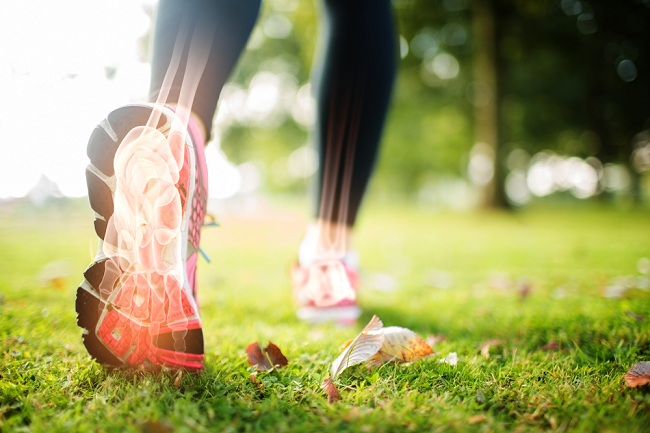Has your grandmother fallen and broken a bone? Have you noticed that your mother’s back is no longer straight when she walks?
For generations, women have dealt with osteoporosis — a condition in which the bones become less dense and more likely to fracture. It’s often called the “silent disease” because you may not notice any changes until you break a bone, typically in the hip, spine, or wrist, or you discover that you’re not as tall as you used to be.
But today’s women no longer have to accept osteoporosis as a fact of life as they get older. There are ways to prevent weakened bones in later life, slow your rate of bone loss, and rebuild bone to prevent fractures.
Risk factors
To keep bones strong, the body is always breaking down old bone and replacing it with new tissue. As we age, more bone is broken down than is replaced, and the risk of osteoporosis increases — especially for women around the time of menopause.
Several risk factors increase your chances of developing osteoporosis, including:
- A thin, small-boned frame
- Previous fracture or family history of bone fractures
- Estrogen deficiency from early menopause (before age 45)
- Advanced age
- A diet low in calcium
- Caucasian, Asian, or Hispanic ancestry
- Cigarette smoking
- Excessive use of alcohol
- Prolonged use of certain medications to treat such diseases as lupus, asthma, arthritis, and cancer
Calcium
Getting enough calcium throughout life helps to build and keep strong bones. People over the age of 50 should get 1200 mg of calcium daily. To do this, eat calcium-rich foods, such as low-fat dairy foods, canned fish with soft bones like salmon, dark green leafy vegetables, and calcium-fortified foods like orange juice, breads, and cereals.
To get enough calcium, you may need to take a daily calcium supplement with vitamin D. When I check blood levels of vitamin D, many of my patients have very low blood levels of this important vitamin. Your body uses vitamin D to absorb calcium. Being in the sun for 20 minutes every day helps most people’s bodies make enough vitamin D. You can also get vitamin D from eggs, fatty fish, and cereal and milk fortified with vitamin D.
Exercise
Exercise makes bones and muscles stronger and helps prevent bone loss. Weight-bearing exercises, such as walking, jogging, playing tennis, and dancing, three to four times a week, are best for preventing osteoporosis. Strengthening and balance exercises may help you avoid falls and lessen your chance of breaking a bone.
Tests and treatment
Talk to your doctor if you have a family history of osteoporosis or other factors that may increase your risk for the disease. A safe, painless, bone mineral density test known as a dual-energy X-ray absorptiometry, or DEXA scan, can determine your risk for osteoporosis.
In addition to exercise and calcium supplements, your healthcare provider may prescribe weekly or monthly medications to help rebuild the bone strength.
Monica L. Gefter, MD, FACP, specializes in internal medicine at Academic Internal Medicine. The physicians at Academic Internal Medicine provide comprehensive medical care for adult patients with acute or chronic illness. To make an appointment with one of these doctors, call 423-778-8179 or book an appointment online at Academic Internal Medicine.







